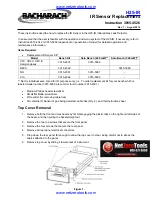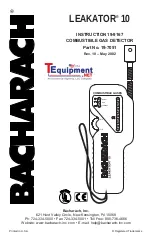
The search consists of a uniform and
slow swinging of the coil one side to
another, while the user holds the
metal detector’s handle and uses the
armrest for support.
Too fast or too slow moving of the
search coil could result in shortening
of the depth of detection, especially
for deeply buried or small objects.
The search coil path during the search
resembles a zigzag movement, which is
a result from the uniform and slow
swinging of the search coil one side to
another while the user is moving
forward.
The swing’s breadth and the user’s
speed are chosen from the user,
according to the terrain, the sloping
and the size of the terrain to be
searched.
During swinging the user should avoid
hitting the search coil in the available
objects on the terrain (stones, roots and
parts from tree and shrubs, uneven
ground).
The precise location of the detected object (centering of the signal), is determined by moving the
search coil in two perpendicular axes, while the user stands still or turns round for detecting the
signal from different sides.
To gain an idea for the depth of which is the detected object, the search coil gradually lifted in
the air above the ground and monitor height to which the metal detector still detect the
object. This, together with specific particular sound (power, duration, purity), is sufficient in
most cases to determine whether it is a shallow or deep object, respectively large or small
object. For this purpose, helps the already described above centering of the signal to study
the area of detection: whether it is narrow or wide.
BLISSTOOL LTC64X
- User Guide (version EN201405101504)
Page 36 of 42







































